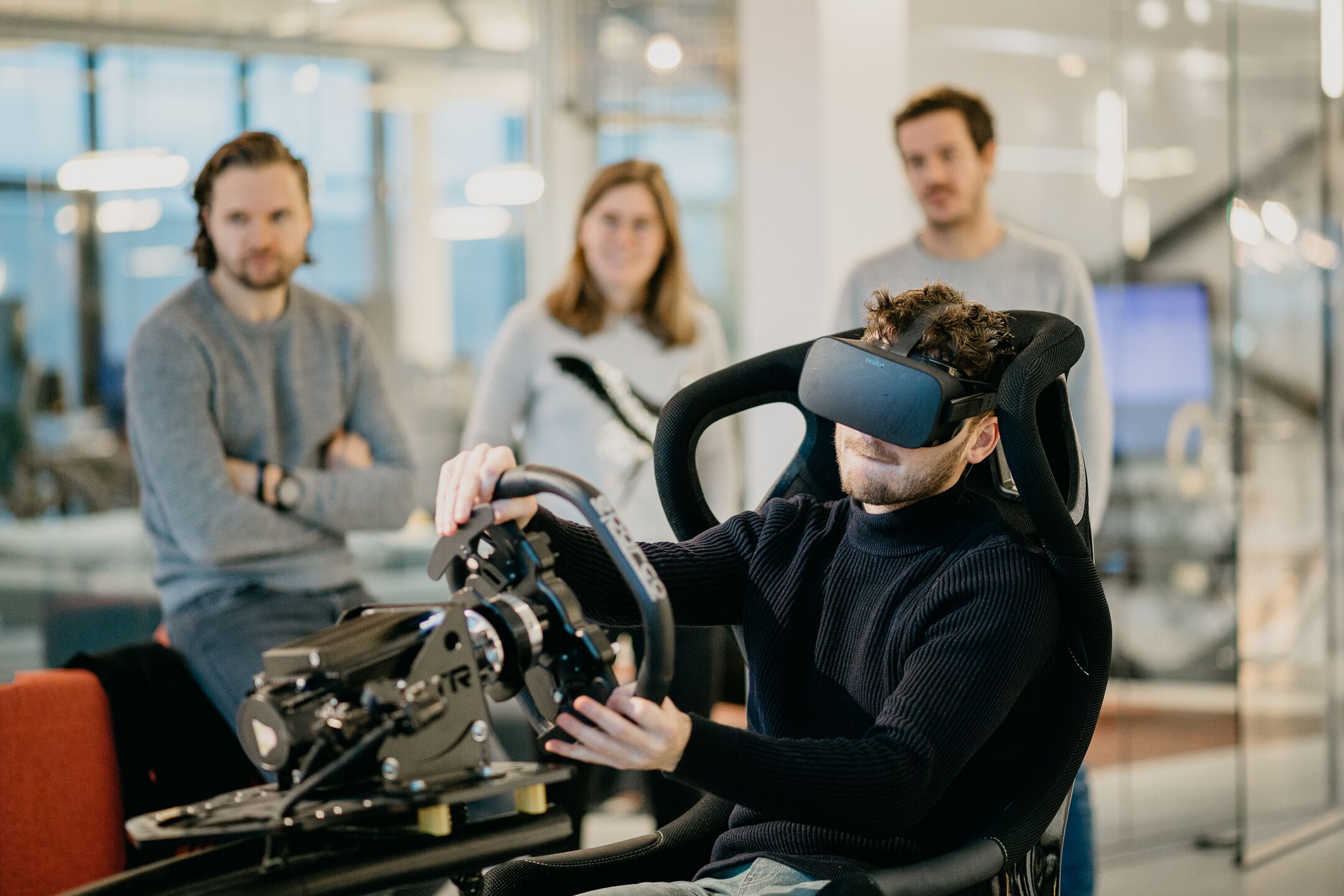This year will set the highest digital bar ever known for consumers and businesses. How people work, live, consume and travel has changed radically due to the coronavirus crisis, pushing digital transformation to the top of the CIO agenda. The form it takes will differ per company, but these three digital trends will affect everyone: the ‘next normal’ where everything becomes more digital; creating optimal digital experiences (multi-experiences), and creating flexible, effective teams that shape digitalisation.
2020 was disorderly, commercially tough and politically charged. The year also presented the world with great social change, working from home, and rapid digital growth. For companies large and small, 2020 was the year to sink or swim. 2021 will certainly be the year of rising digital trends, with the first being the next normal: starting anew and moving forward from past turmoil.
A year of major changes
Prior to March 2020, it was normal to predominantly work from the office, with a few working from home. To be able to work together effectively and agilely, it was essential that the team was physically together. People went to stores to shop, and digital interaction and e-commerce was only one piece of the puzzle. After several years of transformation, about 15% of companies were generating their turnover digitally.
COVID-19 showed that while 15% was a good start, nearly 85% of sales were lost in the beginning of the crisis. This resulted in faster digital growth with more efficient capacity. COVID proved to be a great unlocker for finally working remotely, and inclusivity, diversity and the well-being of teams are now more important than ever. In 2020, the foundation for a completely new way of working was laid.
Furnished home workplaces and new tools like Zoom and Microsoft Teams aided in the transition into this new work style, but cloud infrastructure (Slack, Jira, Github, Gitland and Azure DevOps) was a necessity to accomplish this feat. These changes were implemented at a rapid pace by organisations large and small, traditional and modern, making the ‘next normal’ the biggest digital challenge faced globally.
Mitigating risk in a new age
After the cloud of COVID-19 clears, not all customers will revert to physical contact in stores or welcome sales reps on-site. The discussion in the boardroom is, therefore, mainly about increasing the digital share of business from 15% to 30, 40 and perhaps even 60% of turnover. The main question in the next normal is: “how can we change the business to e-commerce or digitise our customer interactions?” CIOs play a critical role in determining and implementing this new direction.
Cloud-based solutions will play a huge part in the next normal. In January 2020, Gartner, a leading research and advisory company, published The Future of DevOps Toolchains Will Involve Maximizing Flow in IT Value Streams. Tools like Flow from Pluralsight (previously known as GitPrime), help organisations to gain deeper insights into the inner workings of businesses, making quick intervention and adjustments possible if something goes awry.
The era of multi-experience
Looking forward often means taking a look backwards to recognise current trends. In 2000, getting the user interface dynamic and integration with databases was the focus. Talk of service-oriented architecture (SOA) and hosting was only for a website.
The introduction of the iPhone in 2007 heralded the age of the smartphone; regardless of our location, we could suddenly be online 24/7. That’s how the economy app was born, and REST and API drive went mainstream. For the CIO, it was about mesh apps, smart devices, services architecture and cloud adoption. This resulted in more and more communication across more and more online channels, requiring more and more technological knowledge from companies and customers.
The next step is ‘technology with human knowledge’; multi-devices, multi-touchpoints and multi-sensors, all without screens and with interactions that are self-learning, conversational and immersive. This will all be made possible with new architectures that are fully or partially headless, edge, serverless and event-driven. Gartner calls this trend multi-experience (MXP) and places it in its top 10 trends, with a new proprietary Gartner Quadrant for Multiexperience Development Platforms.
Omnichannel is essential
The second digital trend for 2021 is the multi-experience built on omnichannel. This means a significant rise of established services (i.e. delivery, online buying, in-store collection and ordering, returns), will be supported via mobile and web, making them conversational and immersive. Additionally, this means customers can arrange virtually anything via any available channel, intuitively and, above all, easily.
For businesses, this requires an MXP platform in which all relevant sensors and channels can be placed, from immersive experiences such as augmented reality (AR), virtual reality (VR), or mixed reality (MR, a mixture of AR and VR), to conversational UIs such as chatbots and digital assistants. Multi-experience is, in fact, omnichannel plus, making it essential for businesses to be able to build and switch swiftly.
The need for these elements and abilities has turned the focus of conversation to headless architecture, to enable quick innovation and the addition of new technologies.
Case: How Indigo built a B2B multi-experience
Indigo Ag is a good example of the multi-experience trend. The US agricultural technology company was named the world’s most innovative company by CNBC. Indigo Ag built digital products to make all links in the food chain more sustainable and efficient, and our food healthier. The company’s build focused strongly on strengthening smaller sustainable players by giving them access to systems and information normally reserved for the largest global companies.
DEPT®’s work with Indigo spans years. The flexible, integrated team has delivered a complete digital ecosystem including smallholder apps, drone image processing, logistics, machine learning, and marketplaces to bypass major traders. The integration of each creates a true B2B multi-experience that generates billions in sales. The core of the business is built upon the many specialty apps and platforms creating value.
Growth in digital speed
How quickly businesses can foster changes and adapt to the digital playing field is part of the multi-experience trend. Growing as a company is not directly about increased advertising and competitive pricing. Innovation is king, taking shape in the form of new products, services, target groups, regions and segments. No matter the company, digital is now required to ensure the relevance and success of a business. Digital is how customers spend a growing portion of their time on work, entertainment, social contact, education, shopping and mental well-being. Digital equals business, and the ability of a company to grow will determine its success.
Growth is expressed in speed. The speed to develop, test, improve and market new services. Speed is based on efficiency. In order to maintain speed, lean and mean is often better than large and complex.
Multi-experience teams
The third major digital trend to take into account in 2021 is the concept of multi-experience teams. Today, to realise rapid, digital growth, you can put together the very best team with the best people, no matter the physical location of each member.
Experts who are cloud-powered and site-agnostic are available on demand. COVID-19 emphatically proved two unrealised facts: people no longer need to have close physical proximity to work effectively, and agile also works well remotely.
According to recent research by McKinsey, 30% of employees want to continue working in the ‘next normal’ environment, 10% prefer to come to the office, and 60% prefer a mix of both. McKinsey also estimates that companies will divest 35 to 50% of their office space in the next one to two years. Lower costs yield more scope for recruiting the right experts.
Because uncertainty is a daily challenge, the innovation of flexible teams allows for the change of team members and team compositions after each sprint. Seamless integration of data is key to the digital, creative and technical success of businesses.
And while expertise in these fields are found in different departments or separate agencies, flexible teams per sprint or project unites these talents at the right time and in the right composition. Since the ratio of talents will vary moment-to-moment in the lifecycle of a digital product, businesses must be capable of quick and effective changes of the team makeup.
Streamlining effectively
The ‘next normal’ is about creating multi-experiences with valuable customer interaction, anytime, anyplace, anywhere. To do this, identify opportunities that impact the business and drive implementations that support multimodal touchpoints. Bring the required data, technology and creativity together with on demand experts in multidisciplinary teams who work optimally via the cloud.
Digital acceleration is a necessity
The commercial landscape has changed permanently. The focus of the last year was spent on business survival. 2021 is the year for recovery. Now is the time for businesses to decide on who and what they want to become in the new world through building, growing and accelerating. This will require team optimisation that can quickly realise digital products and services and that can move flexibly with the waves of change. Keeping sharp on the three digital trends of the next normal, multi-experiences and multi-experience teams are the way forward to a future of achievement.
Aims to double, triple or even quadruple digital transformation can easily be achieved with DEPT®’s international teams and years of experience with large brands and delivery across various industries. Find out more about the work we do.
More Insights?
View all InsightsQuestions?
Managing Director UK





